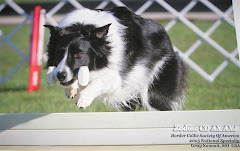There are parts of the country where fleas are not a problem. Good for you. For the rest of us fleas can be a huge problem. I diagnose fleas every day at work, year round.
There are multiple species of fleas in the world but the only one we care about is Ctenocephalides felis-the cat flea. Despite it's name this is the species of flea that preys on all our pets-dogs, cats, rabbits, ferrets, etc.
Where did my dog get fleas? Contrary to popular belief fleas do not generally jump from one animal to another. Once an adult flea feeds on it's host it does not willingly leave. This isn't to say that direct transfer of fleas does not happen, but it's not the primary way pets get fleas. So, what's the real story?
Adult female fleas lay up to 40 eggs per day which then fall off the host into the environment. This is often where the dog or other host animal spends a lot of time-dogs beds, kennels, houses, carpet, shady spots in the yard, etc. Stray cats and wild animals passing through the area (your backyard, the dog park, etc) can also serve as a reservoir. All it takes is eggs dropping off another animal in area where you pet later passes through.

Once the eggs are laid and fall off into the environment they hatch into the larval stage at temperatures of 65-80 degrees F. The larval stage goes through a series of molts over a period of as little as 9 days before entering the pupal stage. The pupae spin themselves into a cocoon and can survive in the environment for months-sometimes up to a year waiting for the right time to emerge. The pupae are specially designed to pick up signals such as heat and vibration to know when a new host is nearby and thus the correct time to emerge. For this reason there could have been no animal in the vicinity for months and all of a sudden a dog moves in and....ta-da....the dog now has fleas!
Once emerged from the cocoon the new adult flea actively searches out and finds a host, begins feeding and the life cycle begins again. Adult fleas can live for 4-6 weeks if they survive the scratching, grooming, and licking activity of the host. Females begin laying eggs within 24-48 hours of feeding.
So if I see fleas on my pet can't I just treat him and be done with it? Usually, no. Sometimes, if the fleas were very recently acquired and they were picked up in an environment you don't frequent (like a hotel, etc), you treat with a product that kills live fleas and sterilizes eggs and there are no other pets in the household then you might get away with that. But the important thing to remember is that typically the live fleas you see on a pet account for only about 5% of the overall flea population. The rest are in various stages of development that are hatching out and developing over a period of several months. Therefore, if you have a flea outbreak it is recommended to treat for at least 3 months. It's also important to treat all the pets in the house even if they are not itching or you don't see fleas. Some pets, especially cats, are very good at removing all traces of fleas from their fur. And some pets are not allergic to flea bites-so just because they are not itching does not mean they don't have fleas.
What problems do fleas cause? Most commonly flea allergic dermatitis. As many of you know a lot of pets are allergic to fleas. Since fleas tend to congregate on the back half of the animal this often results in itching and chewing above and around the tail and the hind legs. This often leaves hair loss, crusting, redness, bleeding, and infection in those areas. Common treatments include medicated shampoos, steroids, antibiotics and of course a flea control program.
The other major problem fleas cause is anemia or low red blood cell count. This is most common in small puppies and kittens but a severe enough flea infestation can be fatal for an adult dog and blood transfusions can be needed. Fleas also carry tapeworms as previously discussed.
Fleas can be prevented/treated by appropriate use of monthly flea preventatives. Since I have discussed these
previously I won't go into them again. A common question people ask is about resistance to flea medications. Many veterinarians and clients believe there fleas are becoming resistant to some of the older products but this has not actually been proven to my knowledge. So if you are having a flea problem it's certainly not wrong to switch to a different product and see if you have better luck but it's equally important to evaluate the environment and the treatment protocol. Often people overlook environmental areas that need treated or forget about the cat or the neighbor's dog that visits, etc.
Zoonotic potential
Fleas will bite people but much prefer dog and cat blood. So generally speaking people only get bit when there is a very bad infestation or when there are no dogs and cats available. Fleas can spread the organism responsible for
cat scratch fever to cats, who can then spread the disease to humans. This is usually only a significant problem for immunocompromised individuals. Fleas can also contract the organism responsible for
plague from rodents which they can then in turn spread to people but this is quite rare and limited to certain parts of the country.
.jpg)



.jpg)


